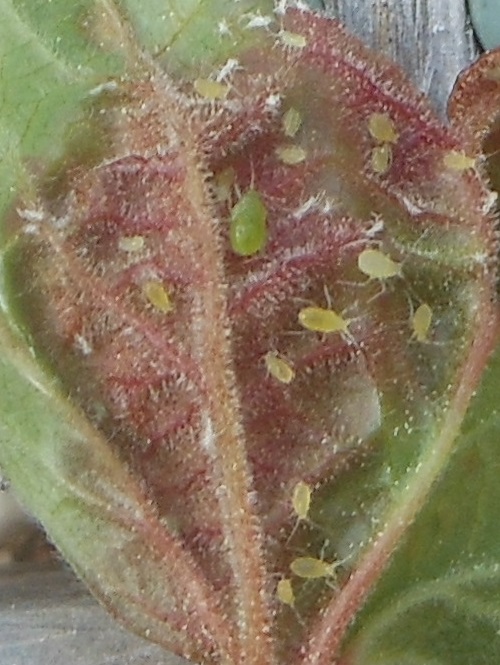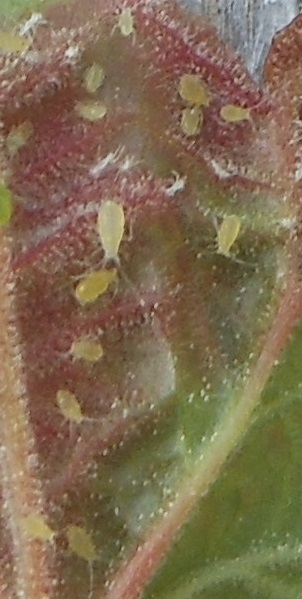Tomato Hornworm Pest Control
General Tomato Hornworm Pest Control Comments
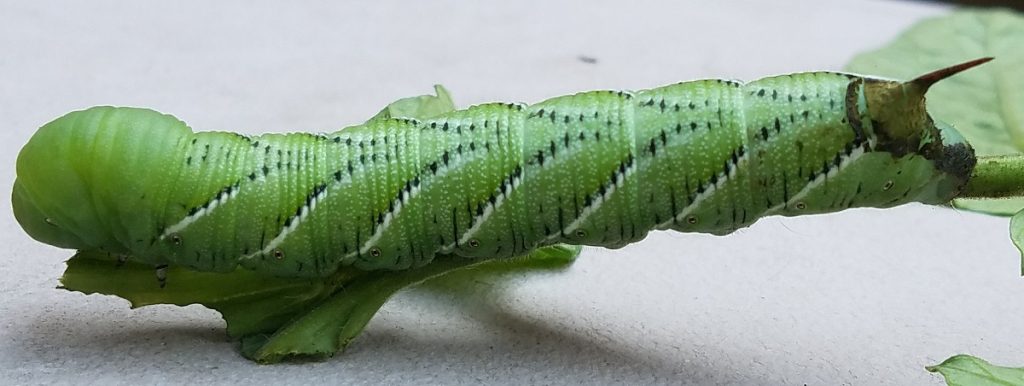
The Five Spot Hawk Moth is a common North American insect. Its larvae, the tomato hornworm, is extremely destructive to tomatoes. I have witnessed a medium tomato plant stripped of its leaves in one day by three hornworms. I have read they will attack potatoes, peppers and eggplants but have not witnessed them on any of those plants. As the pictures show, they eat leaves/stems and chew pieces of fruit and poop all over. In the tomato patch they are true chameleons, a full-grown caterpillar can be extremely difficult to spot. Whenever I have had them, it was the destruction they caused that let me know they were there. Even knowing they are in the garden, it takes time to find them. No matter how much you look, there will be caterpillars left behind. As a word of warning, once you find them, even if you use a chemical or biological method for tomato hornworm pest control you will need to check for new damage / new caterpillars constantly.
Identification
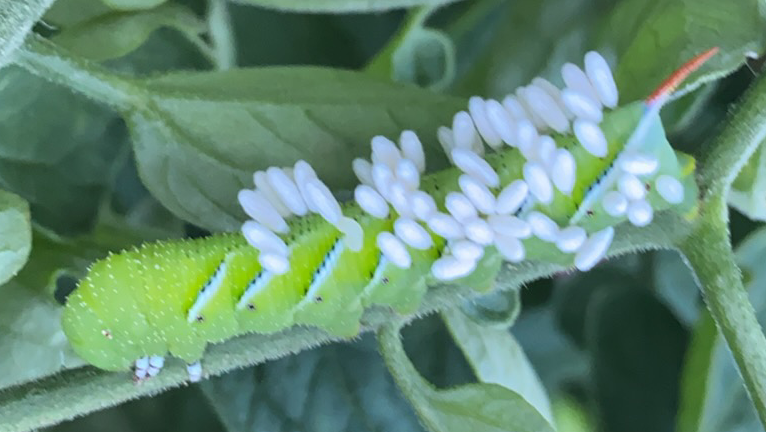
Tomato hornworms grow large, as caterpillars go, they can be 3 to 4 inches and chunky. They are green with diagonal white strips and a black or red horn on their rear-end.
The moths are large, they have a 4 to 5 inch wingspan, and are heavy-bodied. They are gray or brown in color with white zigzags on the rear wings and orange or brownish spots on the body.
Life Cycle
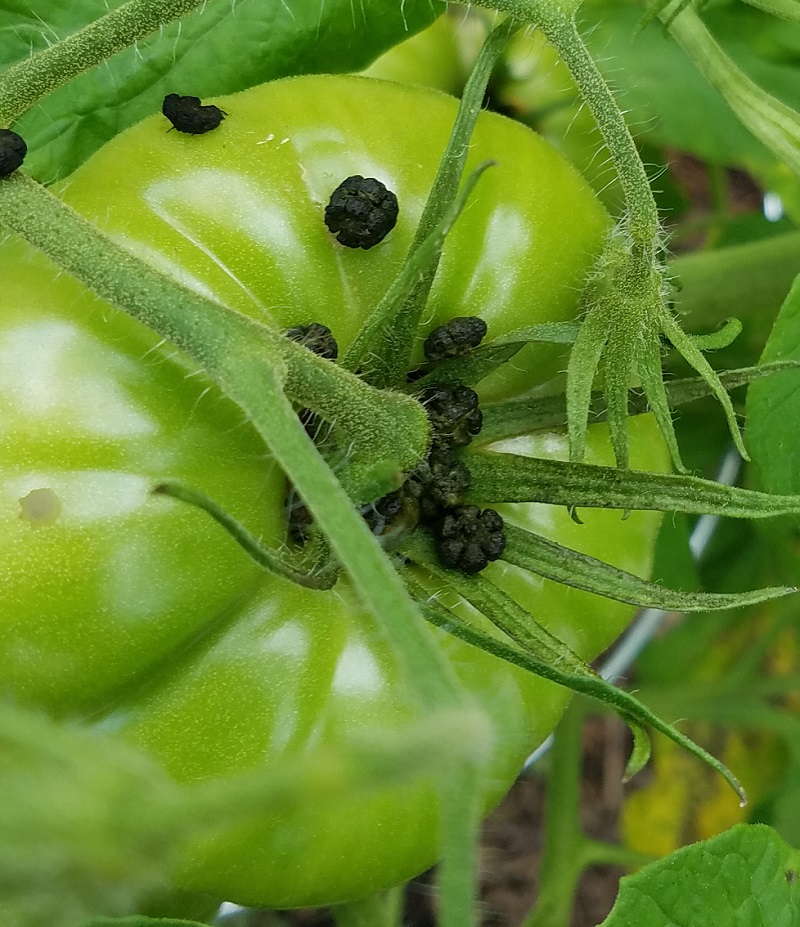
Moths mate, the female lays eggs on tomato leaves. The eggs hatch in about 5 days. Caterpillars will eat until ready to burrow into the ground and pupate. If in spring or early summer, they emerge in about 4 weeks, if in autumn they will overwinter in the soil and emerge the following spring.
Tomato Hornworm Control
I have had great luck using BT (Bacillus thuringiensis). Once eaten, the insects die within a few days to a month. In either case, their destruction is greatly diminished once the BT is ingested.
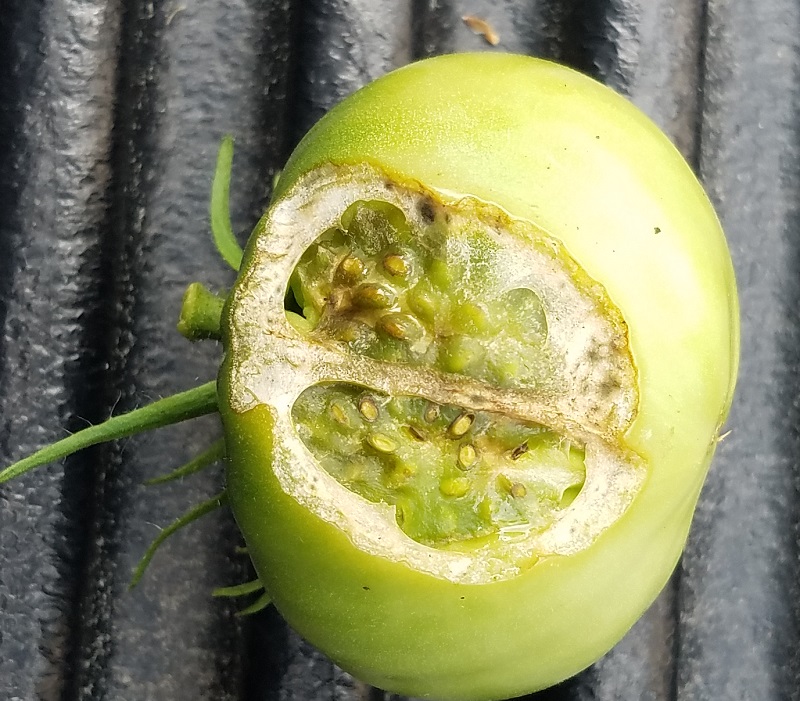
Hornworms are often controlled in home gardens by handpicking. Once removed from the plant, they can be destroyed by dropping them into a bucket of soapy water.
Beneficial insects including lacewings, certain wasps and ladybugs attack the eggs and caterpillars. For best results, make releases when pest levels are low to medium. In addition, you can also plant beneficial herbs such as dill and cilantro to attract these beneficial predators.
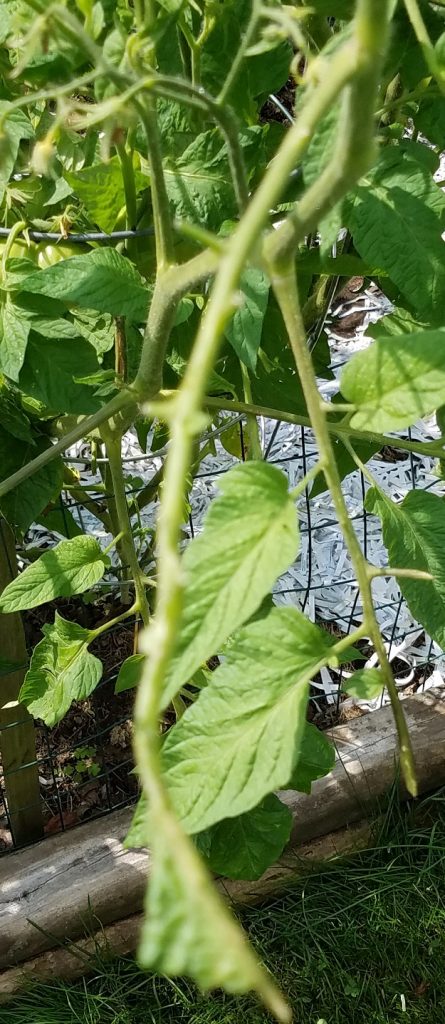
If populations are high, use pesticides to kill the caterpillars. This should be a one and done treatment, remember, pesticides do not discriminate.
Apply Diatomaceous Earth on plants and leaves. It is short acting – rain will diminish its effectiveness. As the insect (any insect) crawls through the DE powder its outer skin will be cut up resulting in death.
Roto-tilling after frosts have started destroys overwintering pupae in the soil.
Note: If you have caterpillars that have parasitic wasp cocoons attached to them, leave that caterpillar alone. The wasp larvae will parasitize the caterpillar emerge into adults and now you will have an army of free, natural predators.
